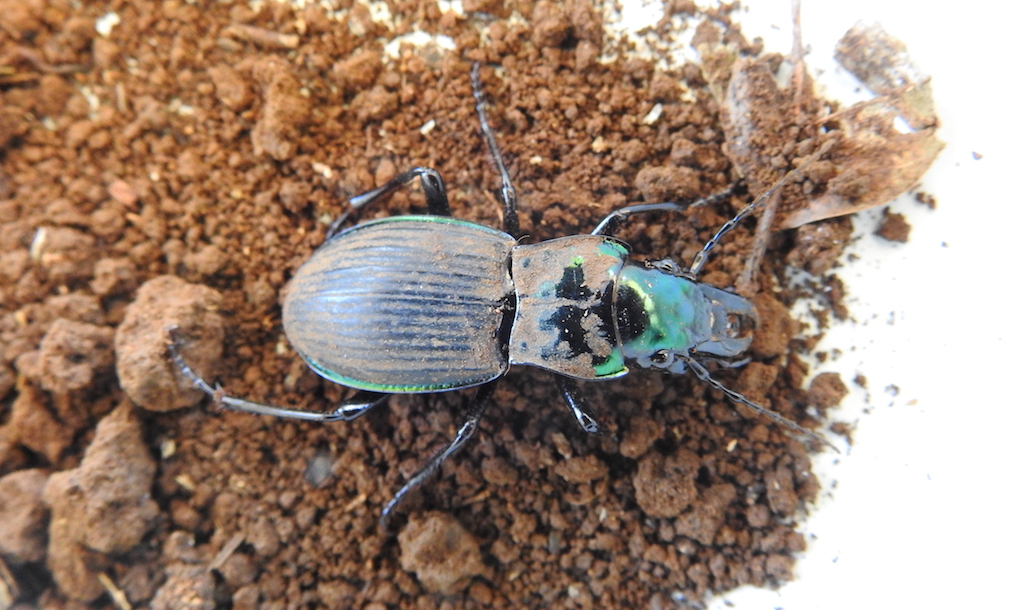Contributed by Joy Window, Big Scrub Landcare
News broke recently of the finding of a rare and little known rainforest ground beetle (Nurus moorei) below Minyon Falls in the Nightcap National Park during a faunal survey. This recently described, flightless beetle has been found so far only in rainforests in valleys of the Lamington and Springbrook plateaus, at Hayters Hill and the lower Minyon valley. The beetle group it belongs to (the Carabidae) has about 2575 described species and subspecies in Australia alone (as reported in a CSIRO publication in 2010).
Ground beetles live all over the place—in leaf litter, under tree bark or in rotting timber, on tree trunks and leaves, and at the edges of ponds, streams and wetlands. Their inability to fly makes it difficult for them to move between isolated patches of rainforest.
Most ground beetles have long legs for running down their prey, which they see with their excellent vision, attacking and dispatching insects, millipedes, centipedes and spiders with their strong, sharp, pointy mouthparts. Nurus moorei also has long legs but uses a different method of catching its food.
Ecological consultant David Charley, referencing Geoff Monteith (former insect curator at the Queensland Museum and the leading authority on this group), says they construct distinctive burrows with a clear platform or ‘stage’ at the entrance, on which they ambush their prey.
Major threats to the species could be fragmentation of habitat; ground-litter disturbance by over-abundant Australian brush-turkeys; predation of immature beetles or larvae by birds, etc., as they move about looking for a new burrow site; and also storm water drainage being directed into remnants.
Be careful not to upset one of these if you see it—to defend itself, it is likely to expel a liquid that smells strongly. A relative, the bombardier beetle, has been seen to release 80 such ‘shots’, with accompanying loud ‘cracks’, within four minutes—definitely a signal to leave it in peace!
Nurus moorei might be uncommon, but you never know what you’ll find if you just get out there and look—maybe you’ll see our rare friend for yourself.


